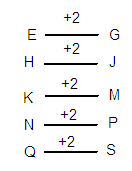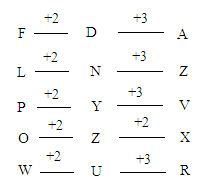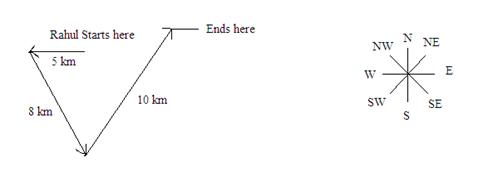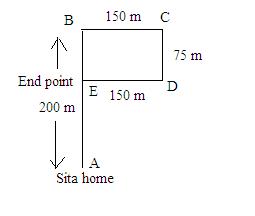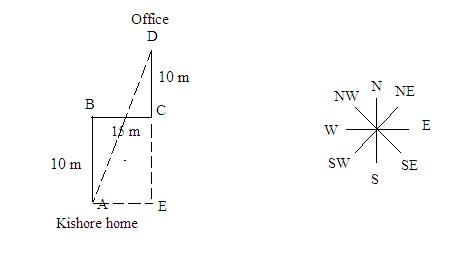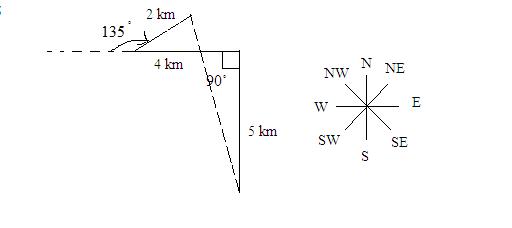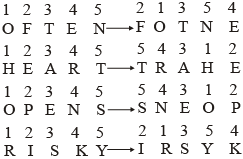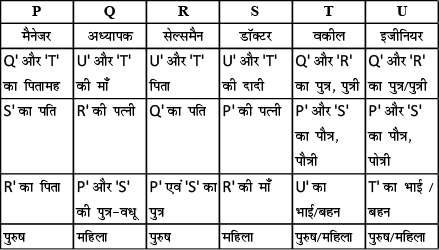Ranking And Ordering - Short-cut Tricks And Examples
The position of a thing/person etc. in a definite order is called as ‘Rank’.
In this type of test, relative position or rank of some person or object are given and candidates are required to find the rank or position of other person or object.
Type of Questions
Type 1. Rank of a person in a queue
| Position of person from upward | = [Total no. of persons – position of person from down] + 1. |
| Position of person from downward | = [Total no. of persons – position of person from up] + 1. |
| Position of person from right | = [Total no. of persons – position of person from left] + 1. |
| Position of person from left | = [Total no. of persons – position of person from right] + 1. |
Example 1: Anita ranks twelfth in a class of forty six. What will be her rank from the last?
- 34th
- 35th
- 36th
- 37th
Solution. (2): Rank of Anita from the last
= [Total students – her rank from first] + 1
= (46 – 12) + 1 = 35th.
Example 2: Ravi is 7 ranks ahead of Sumit in a class of 39. If Sumit’s rank is 17th from the last, what is Ravi’s rank from the start?
- 14th
- 15th
- 16th
- 17th
Solution. (c): Rank of Ravi from the last = 17 + 7 = 24th.
∴ Rank of Ravi from the start = (39 – 24) + 1 = 16th.
Type 2. Total number of person in a queue
| Total no. of persons = [Position of person from upward/right + Position of person from downward/left] – 1. |
Example 3: Rakesh ranks 7th from the top and 28th from the bottom in a class. How many students are there in the class?
- 34
- 35
- 36
- 37
Solution. (1): Total no. of students = [7 + 28] – 1 = 34.
Type 3. When two persons change their rank in a queue
| If two persons are on a definite position from up and down (or left and right) and they interchange their ranks, then Total no. of persons in order = [present position of first person + previous position of second person] – 1 |
Example 4: In a row of girls, Shilpa is eighth from the left and Reena is seventeenth from the right. If they interchange their positions, Shilpa becomes fourteenth from the left. How many girls are there in the row?
- 34
- 35
- 30
- 37
Solution. (3): Total no. of girls
= [present position of Shilpa + previous position of Reena] – 1
= (14 + 17) – 1 = 30
| Previous position of first person or present position of second person = Difference of two positions of second person + previous position of second person = Difference of two positions of first person + previous position of second person. |
Example 5: In a row of children, Dipa is fifth from the left and Vijay is sixth from the right. When they interchange their places among themselves, Dipa becomes thirteenth from the left. Then, what will be Vijay’s position from the right ?
- 4th
- 14th
- 8th
- 12th
Solution. (b): Present position of Vijay
= Difference of two positions of Dipa + previous position of Vijay
= (13 – 5) + 6 = 14th
Solved Examples
Question 1. Aruna ranks twelfth in a class of fortysix. What will be her rank from the last?
Solution: Rank of Aruna from the last
= [Total student – her rank from first] + 1 = (46 – 12) + 1 = 35th.
Question 2. In a class of 35 students Kiran is placed 7th from the bottom whereas Sohan is placed 9th from the top. Mohan is placed exactly in between the two. What is Kiran’s position from Mohan ?
Solution: Position of Kiran from the top = [35 – 7] + 1 = 29 th
Position of Sohan from the top = 9th.
Difference of their positions = 29 – 9 = 20
∴ Mohan’s position from top = 9 + 10 = 19th
Hence, Kiran’s position from Mohan = 29 – 19 = 10th
Question 3. Sonal ranks 7th from the top and 28th from the bottom in a class. How many students are there in the class?
Solution: Total no. of students = [7 + 28] – 1 = 34.
Question 4. There are thirty five students in a class. Suman ranks third among the girls in the class. Amit ranks 5th among the boys in the class. Suman is one rank below Amit in the class. No two students hold the same rank in the class. What is Amit’s rank in the class?
Solution: Suman is one rank below Amit in the class. Hence two girls and four boys are ahead of Amit. Hence Amit’s rank in the class is 7th.
Question 5. Manish ranked sixteenth from the top and twenty-ninth from the bottom among those who passed an examination. Six boys did not participate in the competition and five failed in it. How many boys were there in the class?
Solution: Total no. of students = [(16 + 29) – 1] + 6 + 5 = 55.
Question 6. In a sequence of children, Kashish is fifth from the left and Mona is sixth from the right. When they interchange their places among themselves, Kashish becomes thirteenth from the left. Then, what will be Mona’s position from the right?
Solution: Second position of Mona = Difference of two positions of Kashish + First position of Mona = (13 – 5) + 6 = 14th
Question 7. Mohan is older than Prabir, Suresh is younger than Prabir. Mihir is older than Suresh but younger than Prabir. Who among the four is the youngest?
Solution:
- Mohan > Prabir > Suresh
- Prabir > Mihir > Suresh
Hence, Mohan > Prabir > Mihir > Suresh
